FRAGILI CREATURE @Galleria Giovanni Bonelli, Pietrasanta (Lu), Italy
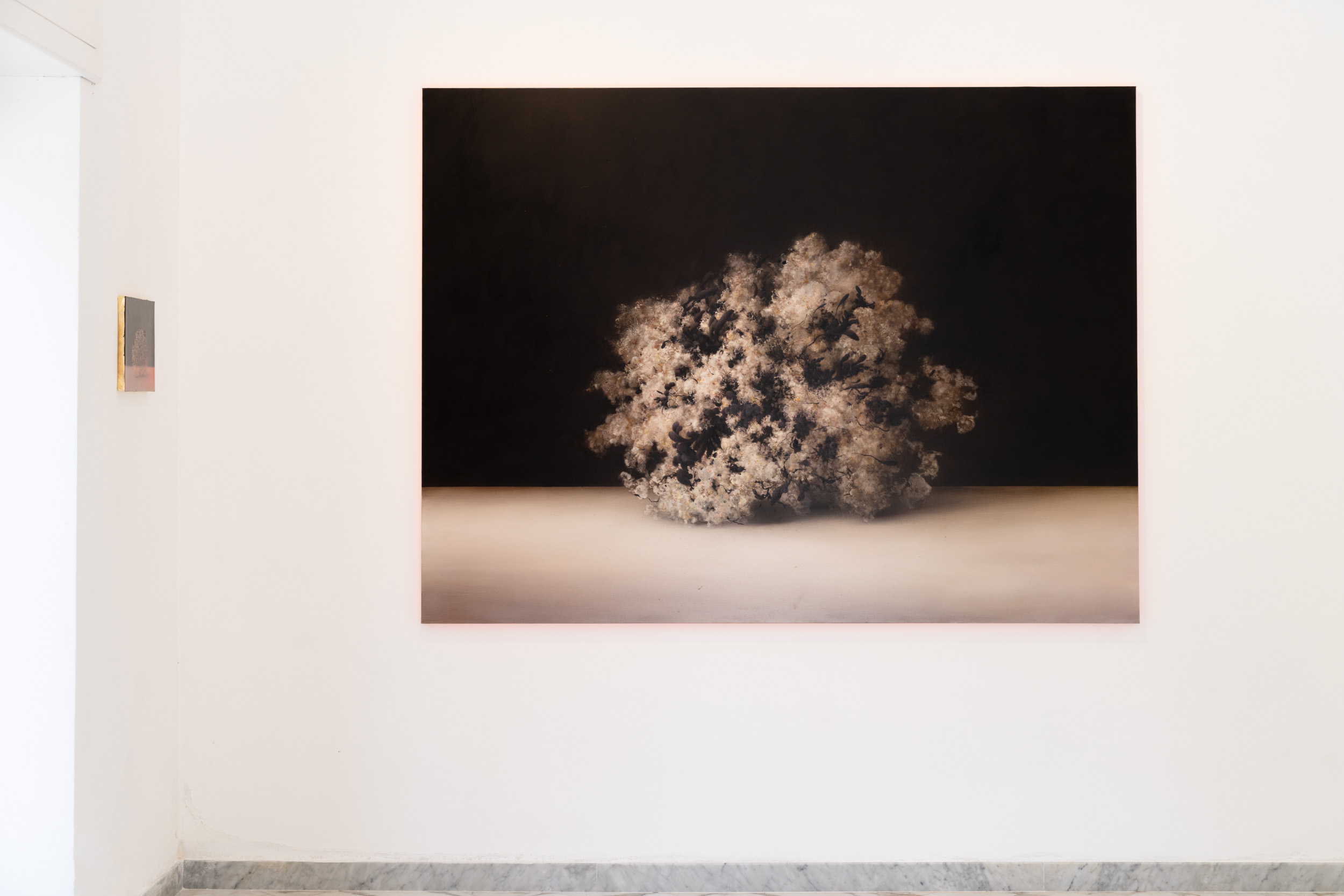

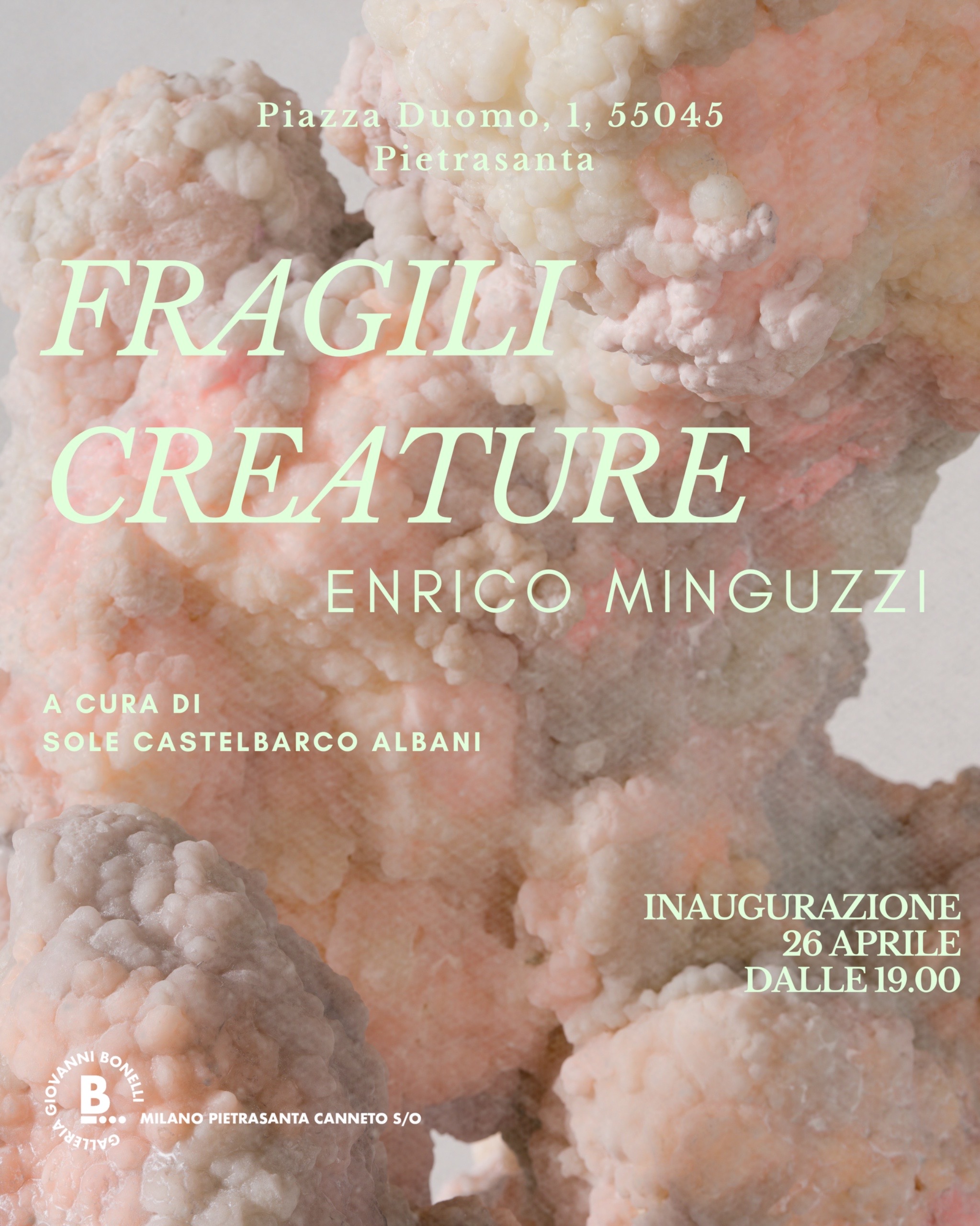
Fragili creature
Curated by Sole Castelbarco Albani
26.04.2025 / 08.06.2025 Galleria Giovanni Bonelli, Pietrasanta (Lu), Italy
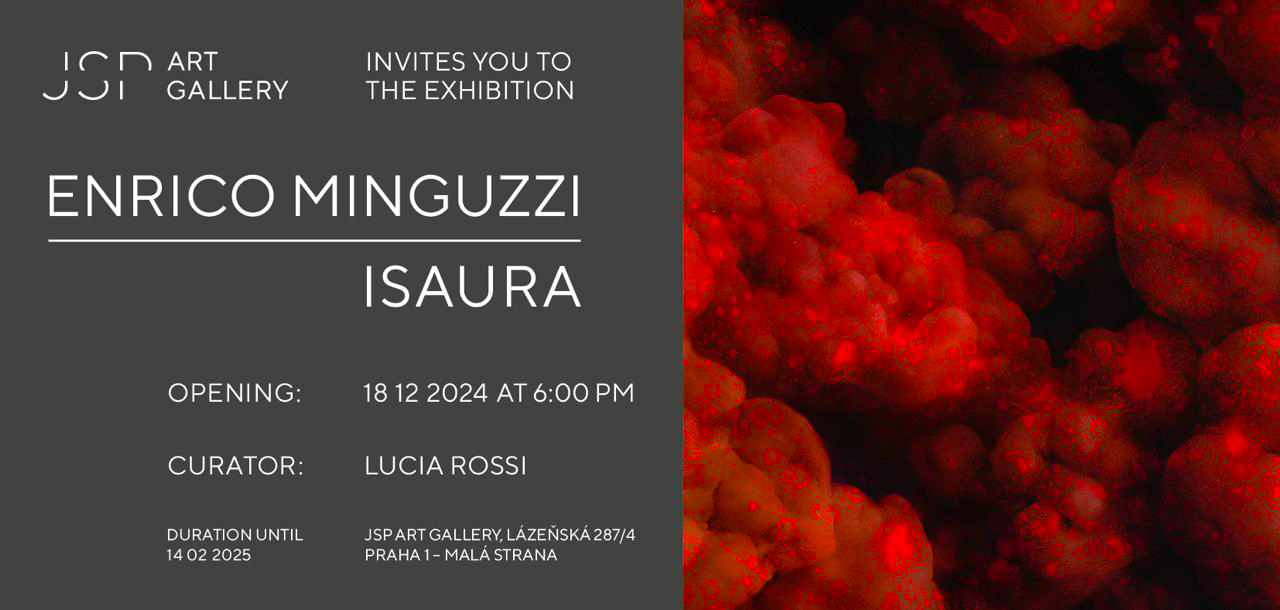
Press Release
Italian painter Enrico Minguzzi was introduced to the Czech audience for the first time this year as part of the group exhibition Preparing for Darkness, Vol. 8 at the Museum Kampa in Prague.
Enrico Minguzzi (*1981, Cotignola) is an Italian painter born in Cotignola, who currently lives and works in Bagnacavallo. He constructs his subjects as if in a process of phenomenological description that he subsequently alters and decomposes in order to achieve greater formal mobility. As in his paintings, he created this works as a result of a stratification of colours and figures. Through a patient superimpositions of veils, Minguzzi composes imageries that are subjected to a continuous process of mutation and metamorphosis, until he achieves a dynamic equilibrium that nullifies any pretense of distinction between figuration and abstraction.
The title of the exhibition references Isaura, one of the imagined cities from Italo Calvino’s Invisible Cities. Lucia Rossi, the curator of the exhibition, said: “Like Calvino, Minguzzi seems to ask: What are those primal truths that are cast as the basis of life but also of the progress of individual civilizations? His works, with living beings, among the sleepy and the inanimate, manifest their beauty and greatness by laying their foundations on top of an underground, deep reality, of which the inhabitants know nothing. Veritas est in puteo (truth lies in the deep), as Schopenhauer states. The true essence is precluded, and these landscapes, still lifes, and thin organisms base their magnificence on a basic ignorance. What Minguzzi does is to push/pull us to the bottom of the black lake, to shed some light and offer more fullness.”
Through careful manipulation of color, texture, and form, Minguzzi invites viewers to dive into this submerged reality. His “detours of nature” reveal worlds poised between harmony and chaos, order and disorder, where every element has its own resonance, giving birth to new beings and interpretations. The exhibition embodies the essence of a hybrid atmosphere – one where the natural and artificial, the real and imaginary coexist.
Minguzzi’s works embody a fundamental crisis of place and nature, one that resonates with the crisis of modernity itself. His invisible ‘cities’, like Isaura, may be unreachable in the physical world, but they exist in the viewer’s mind – pulviscular utopias, fragments of a larger, unseen whole. As Kublai Khan, the emperor in Calvino’s novel, ponders the truth of Marco Polo’s stories, we, too, are drawn into Minguzzi’s world, uncertain yet compelled by its deeper truths.
JSP Art Gallery invites you to the exhibition Isaura by Italian artist Enrico Minguzzi, opening on December 18, 2024. This exhibition showcases new works that delve into the unseen and the buried, exploring landscapes both mental and lived through intricate painting that merges reality with the imaginary
Exhibition Title: Isaura
Exhibiting Artist: Enrico Minguzzi
Exhibition Curator: Lucia Rossi
Duration: December 18, 2024 – January 30, 2025 Opening: December 18 at 6:00 PM
Address: Lázeňská 287/4, Prague 1 – Malá Strana

HORTUS.
La pazienza e la grazia
da un’idea di Davide Benati | an idea by Davide Benati
OTTO Gallery, Bologna
opening 12 october 2024 6 PM
12.10 – 21.12.2024
Davide Benati, Gianni Dessì,
Enrico Minguzzi, Nicola Samorì
ITA
Dopo la mostra Stazionari Altrove del 2023, a cura di Matteo Montani, con HORTUS. La pazienza e la grazia, progetto a cura di Davide Benati, OTTO Gallery è lieta di presentare il secondo appuntamento dedicato all’ideazione di un progetto espositivo da parte di un artista della galleria.
Il titolo rimanda a suggestioni antiche legate alla cura e alla ricerca della bellezza. Dagli Hortiromani all’Hortus conclusus monastico medievale fino al giardino ornamentale vi è l’idea che non possa esserci cura senza pazienza e incanto senza grazia. Il giardino-orto, luogo dove il lavoro trasforma la natura e produce frutti e il giardino-ornamentale, luogo lussureggiante di pace, silenzio e bellezza sono spazi simbolici di perfetta armonia tra mondo naturale e umano intelletto e si prestano ad essere assimilati alla tela e alla pratica del pittore. L’opera è centro fisico ma anche e soprattutto spirituale e intellettuale dell’artista, luogo che richiede lavoro e pazienza. Per i quattro artisti l’Hortus diventa la metafora di un modus operandi che li accomuna, profondamente radicato nella pratica di ciascuno, fatto di pazienza, lentezza e cura.
E’ attraverso questo approccio al fare che Davide Benati (Reggio Emilia, 1949), Gianni Dessì (Roma, 1955), Enrico Minguzzi (Cotignola, 1981) e Nicola Samorì (Forlì, 1977) si confrontano su un aspetto della loro ricerca, quello della bellezza, che è implicitamente presente nelle poetiche di ciascuno. Dagli acquarelli su carta di riso densi o rarefatti, pregni di sollecitazioni letterarie, echi e silenzi di Davide Benati alla pittura sondata nei suoi valori poetici e percettivi, intesa come esperienza del vedere, di Gianni Dessì, fino alle lucenti e meticolose immagini mentali vocate a innescare cortocircuiti di Enrico Minguzzi e alle forme esauste di Nicola Samorì, in bilico tra l’essere e il non essere, il narrare e il tacere, in mostra “ogni lavoro ha in sé l’enigma, a volte risolto o spesso soltanto inseguito, della presenza di un’idea di bellezza che avvolge, soffoca, inebria e inganna il lavoro del pittore”. (D. Benati)
ENG
After the exhibition *Stazionari Altrove* in 2023, curated by Matteo Montani, OTTO Gallery is pleased to present the second event dedicated to the development of an exhibition project by one of the gallery’s artists with *HORTUS. Patience and Grace,* a project curated by Davide Benati.
The title evokes ancient ideas connected to the care and pursuit of beauty. From the Roman *Horti* to the medieval monastic *Hortus conclusus* and the ornamental garden, there exists the notion that there can be no care without patience, and no enchantment without grace. The vegetable garden, a place where labor transforms nature and yields fruit, and the ornamental garden, a lush space of peace, silence, and beauty, are symbolic realms of perfect harmony between the natural world and the human intellect. They are akin to the canvas and the painter’s practice. The artwork becomes not only a physical center but, above all, a spiritual and intellectual space for the artist, requiring both effort and patience. For these four artists, the *Hortus* becomes a metaphor for a shared *modus operandi*, deeply rooted in each artist’s practice, characterized by patience, slowness, and care.
It is through this approach to creation that Davide Benati (Reggio Emilia, 1949), Gianni Dessì (Rome, 1955), Enrico Minguzzi (Cotignola, 1981), and Nicola Samorì (Forlì, 1977) explore a facet of their work: beauty, implicitly present in each of their artistic expressions. From the dense or rarefied watercolors on rice paper, laden with literary stimuli, echoes, and silences by Davide Benati, to Gianni Dessì’s exploration of painting’s poetic and perceptual values, understood as an experience of seeing, and from the luminous, meticulously crafted mental images by Enrico Minguzzi, which trigger conceptual short circuits, to the exhausted forms of Nicola Samorì, poised between being and non-being, narration and silence, in this exhibition “each work holds within itself the enigma—sometimes solved, often only pursued—of the presence of an idea of beauty that envelops, suffocates, intoxicates, and deceives the painter’s craft.” (D. Benati)
OTTO Gallery Arte Contemporanea, Via D’Azeglio 55 – 40123 Bologna
info@otto-gallery.it
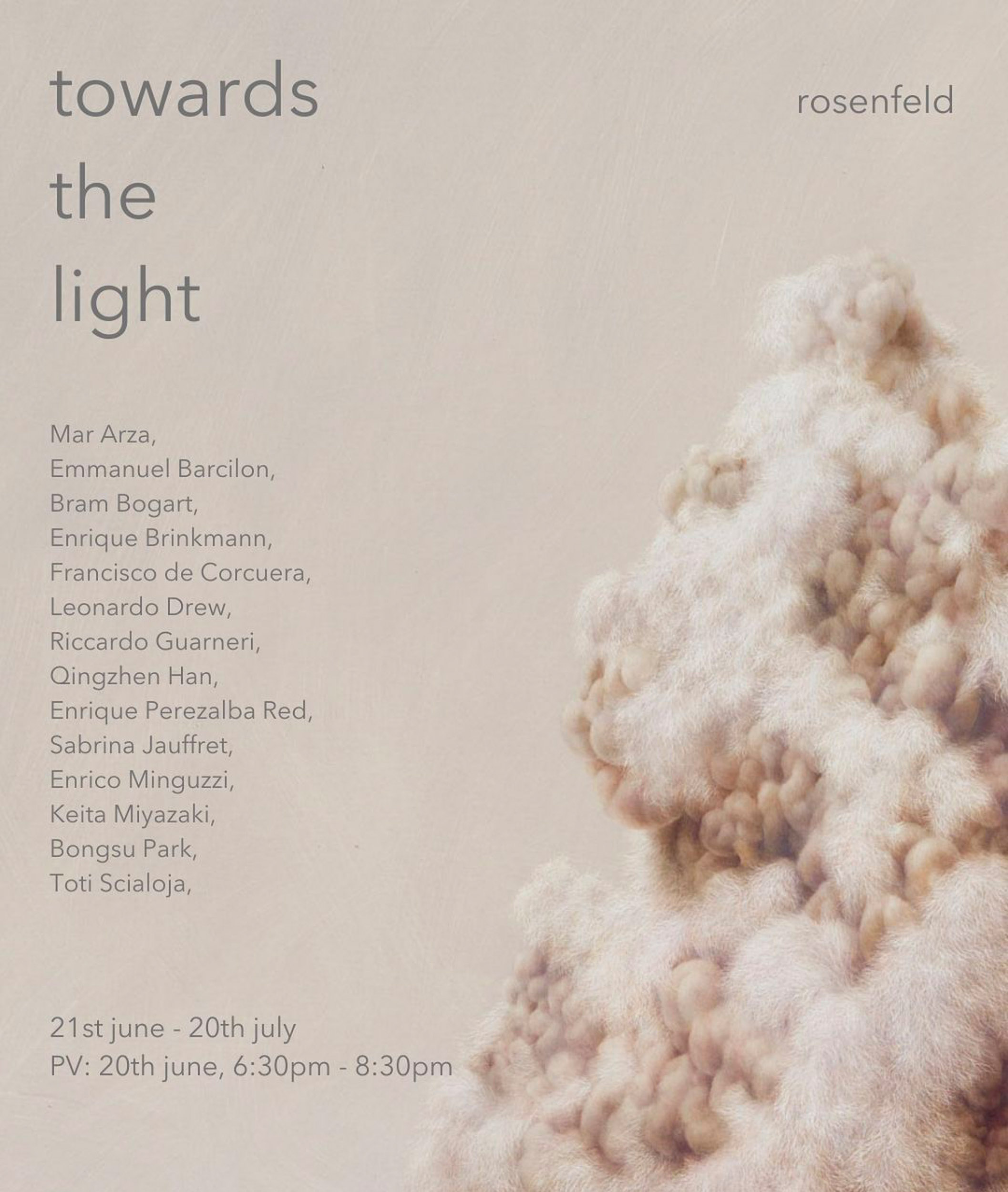
Gallery Rosenfeld is thrilled to present ‘Towards the Light’, a multidisciplinary exhibition featuring fourteen international artists. Thematically, each artist is primarily concerned with the colour white, and how it can be utilised to either give off, or absorb, light. The use of light, the expression of light, the limitations of light: these have all been the primary motors of art across the centuries; from Caravaggio’s invention of chiaroscuro and Dutch 17th century rosenfeld Still Life’s to Monet’s Haystacks and Soulage’s Black paintings. However, the use of white as a predominant colour, only arrived in the art historical lexicon in the 1950s, during the Minimalist period, with artists such as Kazimir Malevich and Robert Ryman making all-white paintings.
20 jun – 20 jul 2024
Works by
Mar Arza, Emmanuel Barcilon, Bram Bogart, Enrique Brinkmann, Francisco de Corcuera, Leonardo Drew, Riccardo Guarneri, Qingzhen Han, Enrique Perezalba Red, Sabrina Jauffret, Enrico Minguzzi, Keita Miyazaki, Bongu Park, Toti Scialoja

ITA
A cura di Alberto Mattia Martini
23.05 – .07.2024
Inaugurazione giovedì 23 maggio h19
Gli artisti presenti alla mostra, tramite i loro personali stili e linguaggi spaziando dalla pittura alla scultura offrono una prospettiva unica e personale, a contributo di una narrazione collettiva che mira a stimolare la discussione e l’interazione attraverso l’eredità insita negli ex voto.
La Galleria Giovanni Bonelli è lieta di presentare la mostra Per Grazia Ricevuta, curata da Alberto Mattia Martini. Una mostra collettiva che si propone di esplorare e reinterpretare il tema degli ex voto in un contesto contemporaneo: una correlazione tra storia e presente, mettendo in relazione tradizione e contemporaneità.
Gli ex voto, ci ricorda Didi-Huberman, sono oggetti misteriosi ed affascinanti, che potrebbero essere associati a fantasmi; essi sono intrisi di storia e spiritualità, fungono da testimoni tangibili delle esperienze umane di gratitudine, protezione, miracolo e sopravvivenza.
La mostra si configura come una riflessione sulla relazione tra tradizione e innovazione, tra sacro e profano, tra il tangibile e il trascendente. Gli ex voto contemporanei, pur mantenendo il loro valore simbolico, si muovono dalle radici puramente religiose per abbracciare una prospettiva più laica e universale.
Come afferma il curatore Alberto Mattia Martini: “Nella mostra la tradizione antica si è fusa con nuovi linguaggi e forme di riflessione ed espressione artistica contemporanea, consentendo la creazione di opere ispirate non solo al concetto di devozione, ma esplorando tematiche più ampie, quali l’identità, la politica, la società e l’ambiente. L’oggetto votivo da materia, si fa emblema del rapporto con altre dimensioni ed affronta questioni articolate e delicate come la vita, malattia, la morte o la rinascita, sia dal punto di vista universale che individuale: un simbolo che diviene mezzo per esprimere emozioni universali o narrazioni individuali. La mostra Per grazia ricevuta nella sua “rivelazione” contemporanea rappresenta un ponte tra il passato e il presente, tra tradizione e innovazione; essa interpreta un’espressione simbolica che è la manifestazione della nostra continua e costante ricerca di riuscire a dare un significato e quindi una speranza all’esistere.”
Per sottolineare il concetto diventa cruciale la cornice allestitiva, che evoca il tradizionale modo in cui gli ex voto vengono solitamente collocati: una composizione suggestiva, che richiama l’atmosfera delle chiese, dove “i manufatti allegorici” creano una sorta di accumulazione organica, una stratificazione temporale tipica dei luoghi di culto, dove gli elementi votivi di ringraziamento e di devozione si sovrappongono creando un rapporto di dialogo complesso e profondo. Il visitatore si ritrova così immerso in un’esperienza che invita alla riflessione ed alla contemplazione. In questo contesto, l’ex voto diventa un mezzo attraverso il quale gli artisti ci esortano a esplorare le relazioni con il sacro, la fortuna e il destino, offrendo una riflessione profonda sulla condizione umana e sullaricerca di conforto e speranza.
Opere di: Guido Airoldi, Maddalena Ambrosio, Stefano Arienti, Gabriele Arruzzo, Yuval Avital, Mattia Barbieri, Mirko Baricchi, Matteo Basilè, Matteo Bergamasco, Alessandro Bergonzoni, Thomas Berra, Bertozzi&Casoni, Andrea Bianconi, Lorenzo Brivio, Nicolò Bruno, Michele Bubacco, Luca Caccioni, Chiara Calore, Anna Capolupo, Nicola Caredda, Linda Carrara, Valeria Carrieri, Antonio Catelani, Andrea Chiesi, Marco Cingolani, Gianluigi Colin, Giacomo Cossio, Fabrizio Cotognini, Rudy Cremonini, Vanni Cuoghi, Sabrina D’Alessandro, Aldo Damioli, Alberto De Braud, Leonida De Filippi, Francesco De Grandi, Francesco De Molfetta, Silvano De Pietri, Marta Dell’Angelo, Mario Dellavedova, Aron Demetz, Marco Demis, Pino Deodato, Nicola Di Caprio, Fulvio Di Piazza, Roberto Dolzanelli, Tamara Ferioli, Enzo Fiore, Sergio Fiorentino, Francesco Fossati, Giovanni Frangi, Maurizio Galimberti, Michelangelo Galliani, Omar Galliani, Daniele Galliano, Laura Giardino Robert Gligorov, Giuseppe Gonella, Domenico Grenci, Ester Grossi, Franco Guerzoni, Agnese Guido, Audrey Guttman, Silvia Inselvini, Filippo La Vaccara, Franceso Lauretta, Giovanni Manfredini, Lorenzo Mariani, Bruno Marrapodi, Franco Marrocco, Luciano Massari, Andrea Mastrovito, Marco Mazzoni, Paolo Migliazza, Enrico Minguzzi, Kazumasa Mizokami, Concetta Modica, Elena Modorati, Tomoko Nagao, Silvia Negrini, Marco Pace, Silvia Paci, Mimmo Paladino, Robert Pan, Alessandro Papetti, Paola Pezzi, Paolo Pibi, Alex Pinna, Michelangelo Pistoletto, Luigi Presicce, Massimo Pulini, Pierluigi Pusole, Gherardo Quadrio Curzio, Alfredo Rapetti, Alberto Rastelli, Giotto Riva, Brigitta Rossetti, Elisa Rossi, Laboratorio Saccaccardi, Nicola Samorì, Davide Serpetti, Marta Sesana, Giuseppe Stampone, Ema Stokholma, Luca Trevisani, Wainer Vaccari, Vedovamazzei, Nicola Verlato, Flaminia Veronesi, Dany Vescovi, Fabio Viale, Velasco Vitali.
Con la partecipazione straordinaria di Dino Buzzati con uno dei suoi Ex-voto, per gentile concessione degli eredi.
ENG
Curated by Alberto Mattia Martini
23.05 – .07.2024
Opening Thursday, May 23, 7 PM
The artists featured in the exhibition, through their personal styles and languages ranging from painting to sculpture, offer a unique and personal perspective, contributing to a collective narrative that aims to stimulate discussion and interaction through the legacy inherent in ex-votos.
Galleria Giovanni Bonelli is pleased to present the exhibition “For Grace Received,” curated by Alberto Mattia Martini. This group exhibition aims to explore and reinterpret the theme of ex-votos in a contemporary context: a correlation between history and the present, connecting tradition and modernity.
As Didi-Huberman reminds us, ex-votos are mysterious and fascinating objects that could be associated with ghosts; they are imbued with history and spirituality, serving as tangible witnesses to human experiences of gratitude, protection, miracle, and survival.
The exhibition reflects on the relationship between tradition and innovation, the sacred and the profane, the tangible and the transcendent. Contemporary ex-votos, while retaining their symbolic value, move from purely religious roots to embrace a more secular and universal perspective.
As curator Alberto Mattia Martini states: “In the exhibition, ancient tradition has merged with new languages and forms of contemporary artistic reflection and expression, allowing the creation of works inspired not only by the concept of devotion but also exploring broader themes such as identity, politics, society, and the environment. The votive object, from matter, becomes an emblem of the relationship with other dimensions and addresses complex and delicate issues such as life, illness, death, or rebirth, both from a universal and individual perspective: a symbol that becomes a means to express universal emotions or individual narratives. The exhibition ‘For Grace Received’ in its contemporary ‘revelation’ represents a bridge between the past and the present, between tradition and innovation; it interprets a symbolic expression that is the manifestation of our continuous and constant search to give meaning and thus hope to existence.”
To underscore the concept, the exhibition setting becomes crucial, evoking the traditional way ex-votos are usually displayed: a suggestive composition that recalls the atmosphere of churches, where “allegorical artifacts” create a sort of organic accumulation, a temporal stratification typical of places of worship, where votive elements of gratitude and devotion overlap, creating a complex and profound dialogue. The visitor thus finds themselves immersed in an experience that invites reflection and contemplation. In this context, the ex-voto becomes a means through which artists urge us to explore relationships with the sacred, fortune, and destiny, offering a profound reflection on the human condition and the search for comfort and hope.
Works by:
Guido Airoldi, Maddalena Ambrosio, Stefano Arienti, Gabriele Arruzzo, Yuval Avital, Mattia Barbieri, Mirko Baricchi, Matteo Basilè, Matteo Bergamasco, Alessandro Bergonzoni, Thomas Berra, Bertozzi&Casoni, Andrea Bianconi, Lorenzo Brivio, Nicolò Bruno, Michele Bubacco, Luca Caccioni, Chiara Calore, Anna Capolupo, Nicola Caredda, Linda Carrara, Valeria Carrieri, Antonio Catelani, Andrea Chiesi, Marco Cingolani, Gianluigi Colin, Giacomo Cossio, Fabrizio Cotognini, Rudy Cremonini, Vanni Cuoghi, Sabrina D’Alessandro, Aldo Damioli, Alberto De Braud, Leonida De Filippi, Francesco De Grandi, Francesco De Molfetta, Silvano De Pietri, Marta Dell’Angelo, Mario Dellavedova, Aron Demetz, Marco Demis, Pino Deodato, Nicola Di Caprio, Fulvio Di Piazza, Roberto Dolzanelli, Tamara Ferioli, Enzo Fiore, Sergio Fiorentino, Francesco Fossati, Giovanni Frangi, Maurizio Galimberti, Michelangelo Galliani, Omar Galliani, Daniele Galliano, Laura Giardino, Robert Gligorov, Giuseppe Gonella, Domenico Grenci, Ester Grossi, Franco Guerzoni, Agnese Guido, Audrey Guttman, Silvia Inselvini, Filippo La Vaccara, Francesco Lauretta, Giovanni Manfredini, Lorenzo Mariani, Bruno Marrapodi, Franco Marrocco, Luciano Massari, Andrea Mastrovito, Marco Mazzoni, Paolo Migliazza, Enrico Minguzzi, Kazumasa Mizokami, Concetta Modica, Elena Modorati, Tomoko Nagao, Silvia Negrini, Marco Pace, Silvia Paci, Mimmo Paladino, Robert Pan, Alessandro Papetti, Paola Pezzi, Paolo Pibi, Alex Pinna, Michelangelo Pistoletto, Luigi Presicce, Massimo Pulini, Pierluigi Pusole, Gherardo Quadrio Curzio, Alfredo Rapetti, Alberto Rastelli, Giotto Riva, Brigitta Rossetti, Elisa Rossi, Laboratorio Saccaccardi, Nicola Samorì, Davide Serpetti, Marta Sesana, Giuseppe Stampone, Ema Stokholma, Luca Trevisani, Wainer Vaccari, Vedovamazzei, Nicola Verlato, Flaminia Veronesi, Dany Vescovi, Fabio Viale, Velasco Vitali.
With the extraordinary participation of Dino Buzzati with one of his ex-votos, kindly granted by his heirs.
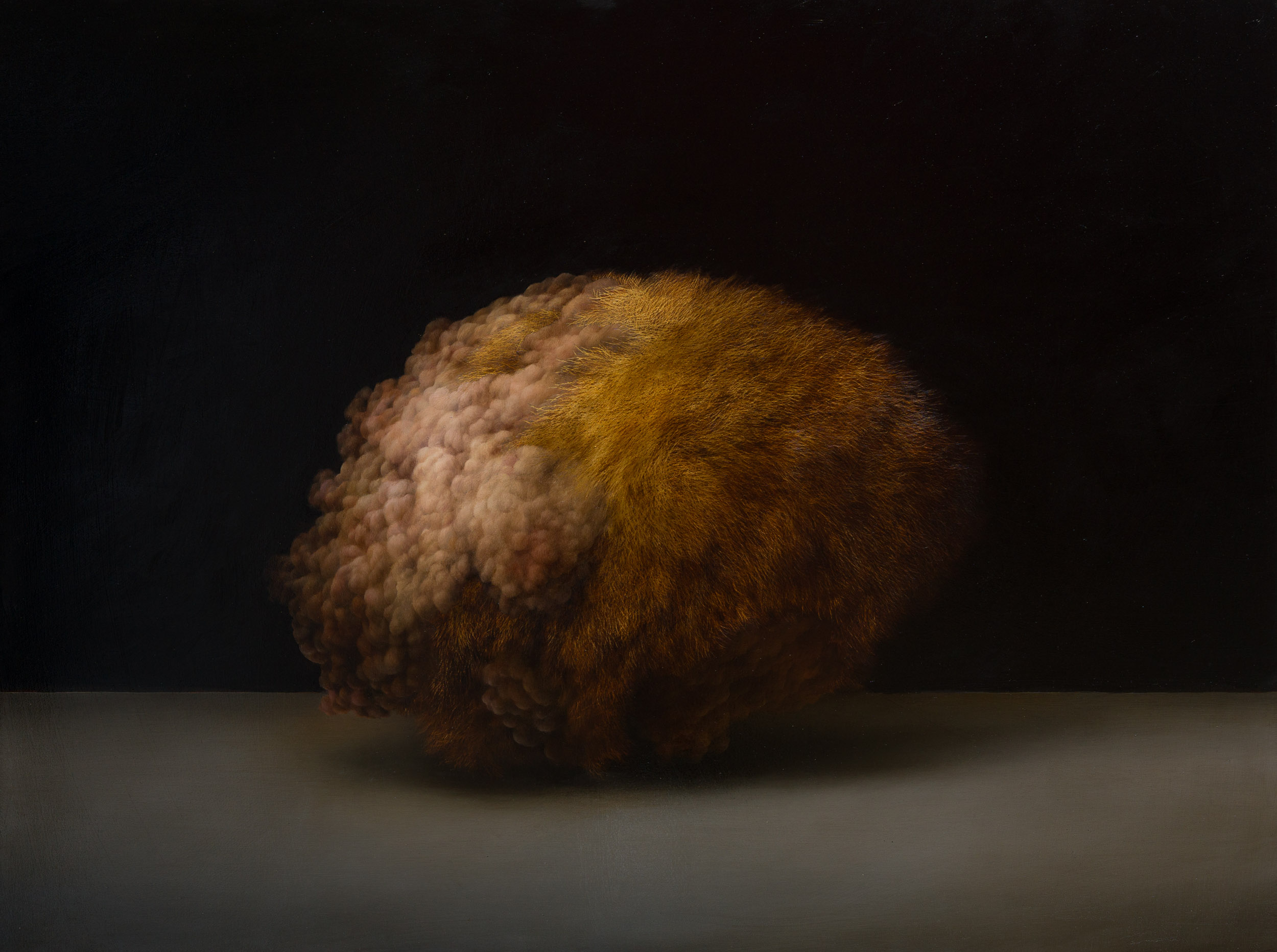
|
|
|
|
|
|

Museum Kampa, Prague
Curated by Uwe Goldenstein
Opening: March 22nd, 2024 at 7 pm
Until May 19, 2024
Opening hours: Tue – Sun, 10 am – 6 pm
Nicola Samorì, Adam Magyar, Adela Janska, Radu Belcin, Richard Stipl, Inna Artemova, Attila Szücs, Flavia Pitis, Daniel Pitín, Enrico Minguzzi, Adam Bota, Rafael Megall (in collaboration with Demetrio Paparoni) & Liu Langqing (in collaboration with ZIAN Gallery, Hangzhou / New York)
About the exhibition / curator’s statement
It’s time for a divorce. A divorce from a type of contemporary art and especially painting that seems suspended in eternal post-modernity; one that, through a marked lack of artistic skill, can’t seem to reference anything but itself. This state of modern art can be experienced as a “pluriverse” of styles, citations, and allusions without a semblance of internal coherence.
With my exhibition series “Preparing for Darkness”, I would like to pose a counter concept. The 8th edition of the series takes place at Museum Kampa and presents 13 artists – mostly painters – who stand as examples of a generation marked by an exceptional intellectual approach to artistic practices. The resulting profound examination of art history, paired with extraordinary artistic skill, can be seen as veritable and imminent, as they each, through their own unique style, offer a real, pictorially comprehensible and perceptible dialogue between past art and their own inscribed emotional world. What unites them is a resurrection of melancholy, which returns to highlight the magical in a viewing experience. In that sense, my chosen metaphor “Preparing for Darkness” is meant to describe both melancholy and the state of the world.
Uwe Goldenstein
Artists
Nicola Samorì (I), Enrico Minguzzi (I), Flavia Pitis (RO), Radu Belcin (RO), Adela Janska (CZ), Richard Stipl (CZ), Daniel Pitín (CZ), Adam Magyar (H), Attila Szűcs (H), Inna Artemova (D), Adam Bota (A), Liu Langqing (CH) & Rafael Megall (ARM / in collaboration with Demetrio Paparoni)